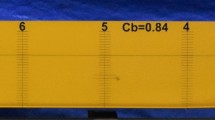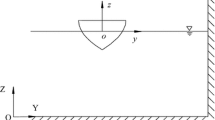Abstract
Rudder is the most important controlling device in ship maneuvering. Usually, it is a passive equipment of a ship, which generates the control forces and moments by inflow velocity and loses its performance when the ship speed reduces. Many parameters are involved in rudder design such as rudder’s shape, area and span. By increasing rudder span, the aspect ratio, rudder area and rudder forces are increased. In addition, research shows that the increasing of rudder aspect ratio is the best option to receive highest performance of rudder than any other change of rudder parameters. Having known that the rudder dimensions limited by ship stern form, rudder span is limited to the ship overall geometry and the stern geometry.
In this research, a new and innovative ship rudder type (Telescopic Rudder) is suggested that allows enlarging the rudder height hence increasing the rudder aspect ratio. This improves the controllability (maneuverability) of vessel by increasing the hydrodynamic coefficients of rudder.
The telescopic rudder made by two pieces, which secondary part slides into the main part. A hydraulic system is used to facilitate sliding thus increasing the rudder height, increasing the aspect ratio and area of rudder producing larger forces. A computer code is also developed to investigate the hydrodynamic characteristics of telescopic rudder by boundary element method (3D-panel). The effectiveness of the new rudder type is studied by the said code in comparison with the conventional type.
Abstrakcyjny
Ster jest najważniejszym urządzeniem kontrolującym w trakcie manewrowania statkiem. Zazwyczaj jest pasywnym elementem wyposażenia statku, który wytwarza siłę i moment dzięki napływowi wody, i traci sprawność, gdy prędkość statku się zmniejsza. Z projektowaniem steru związanych jest wiele parametrów takich jak kształt, pole powierzchni i rozpiętość steru. Przy zwiększaniu rozpiętości steru rosną wydłużenie, pole powierzchni i siły. Badania pokazują, że zwiększenie wydłużenia steru jest, w porównaniu ze zmianą każdego innego parametru, najlepszym rozwiązaniem, żeby uzyskać najwyższą sprawność steru. Ponieważ wymiary steru są ograniczone przez kształt rufy statku, rozpiętość steru zależy od rozmiarów statku i rufy.
W trakcie badań opracowano nowy typ steru — ster teleskopowy, który pozwala na zwiększenie wysokości steru, a dzięki temu na zwiększenie wydłużenia. To rozwiązanie pozwala na poprawienie sterowności statku poprzez zwiększenie wartości współczynników hydrodynamicznych steru.
Ster teleskopowy składa się z dwóch części. Część ruchoma przesuwa się wewnątrz części podstawowej. Do przesuwania części ruchomej został zastosowany układ hydrauliczny. Po wysunięciu części ruchomej zostaje zwiększona wysokość steru, co powoduje wzrost wydłużenia, powierzchni steru i siły hydrodynamicznej. W celu zbadania charakterystyki hydrodynamicznej steru teleskopowego opracowany został program komputerowy oparty na metodzie elementów brzegowych (trójwymiarowa metoda panelowa). Przy pomocy wspomnianego programu zbadana została efektywność nowego steru w porównaniu ze sterem konwencjonalnym.
Similar content being viewed by others
Abbreviations
- N δ :
-
derivative of Y with δ δR, rudder deflection angle
- N δ :
-
derivative of with δ
- \(\bar b\) :
-
mean span
- \(\bar c\) :
-
mean chord
- Ar, AR:
-
rudder area
- λ, Λ:
-
aspect ratio
- α:
-
angle of attack
- L:
-
lift force
- D:
-
drag force
- Y rudder :
-
rudder control force
- N rudder :
-
rudder control moment
- β R :
-
drift angle
- x R :
-
distance from the origin of the ship to the C.P. of the rudder
- x, y, z:
-
system of reference axis
- ϕ:
-
potential function
- u, v:
-
velocity components
- r = \(\dot \psi \):
-
angular velocity
- \(\dot u,\;\dot v,\;\ddot \psi \) :
-
acceleration components
- Δ:
-
displacement
- I Z :
-
mass moment of inertia
- X, Y:
-
resultant total force
- N:
-
resultant total moment
- Xu, \({X_{\dot u}}\):
-
derivative of X with u, \(\dot u\)
- u 1 :
-
initial value of u
- Yv, \({Y_{\dot v}}\), Yr, Yṙ:
-
derivative of Y with v, \(\dot v\)r, ṙ
- Δu1 = u:
-
u 1
- Nv, \({N_{\dot v}}\), Nr, Nṙ:
-
derivative of N with v, \(\dot v\), r, ṙ.
References
Lewis E. V.: Editor. Principles of naval architecture, Vol. III Second Edition, Pub. The Society of Naval Architects and Marine Engineers, Jersey City, New York, 1989.
Volker Bertram: Practical Ship Hydrodynamics, Pub. Butterworth-Heinemann. First published, 2000.
Mason W. H.: Applied computational aerodynamics, Professor of Aerospace & Ocean Engineering Virginia Polytechnic Institute & State University, 1998.
Devenport W.: Wings in ideal flow & non-lifting 3D flow, Virginia Tech Department of Aerospace and Ocean Engineering, 2005.
Author information
Authors and Affiliations
Rights and permissions
About this article
Cite this article
Ghazi-Asgar, S.E., Zeraatgar, H. & Ghiasi, M. Introducing an effective new ship rudder type, Telescopic Rudder. Archiv.Civ.Mech.Eng 7, 69–85 (2007). https://doi.org/10.1016/S1644-9665(12)60226-X
Published:
Issue Date:
DOI: https://doi.org/10.1016/S1644-9665(12)60226-X




